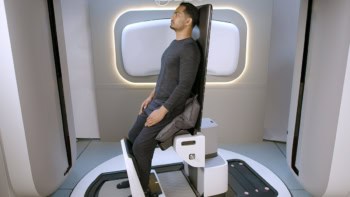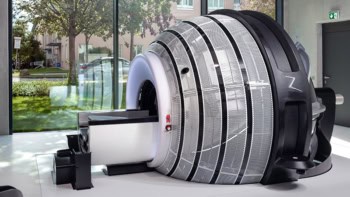Conventional ultrasound techniques are ideal for generating images of the outlines of organs but they provide little information about the types of tissue within these organs. Now Mathias Fink and colleagues from the Laboratoire Ondes et Acoustique in Paris have managed to address this problem (J Bercoff et al. 2004 Appl. Phys. Lett. 842202). The team used shear waves that propagate by moving the point masses from side to side, rather than forward and backwards. The technique could have applications for ultrasound imaging in medicine.
Conventional ultrasound techniques involve sending a series of sound pulses into the body and monitoring the reflections of these pulses from tissue boundaries. By measuring both the time taken for each pulse to return to the source and the amplitude of each pulse, ultrasound machines can build up an image of these boundaries. However, while this approach is ideal for generating images of the outlines of organs, it provides little information about the types of tissue within these organs. For example, a doctor may be able to use an ultrasound image to identify a tumour by virtue of its shape, but may be unable to tell whether it is benign or not.
This limitation stems from the way that sound travels through different materials. Solid materials can be regarded as a matrix of point masses interconnected by springs. Sound waves propagate through such materials by periodically compressing and rarefying the medium. The speed of sound through a particular material therefore depends on the material’s spring constant, or elastic modulus. Although the value of the modulus varies significantly between bone and skin, for example, it does not vary much between different types of soft tissue. This means that contrast between such materials in an ultrasound image is poor.
The advantage of the new approach is that the elastic modulus associated with shear waves varies greatly between different types of tissue.
In the July issue of Physics World Peter Kaczkowski of the Applied Physics Lab at the University of Washington in Seattle describes this work in more detail.



